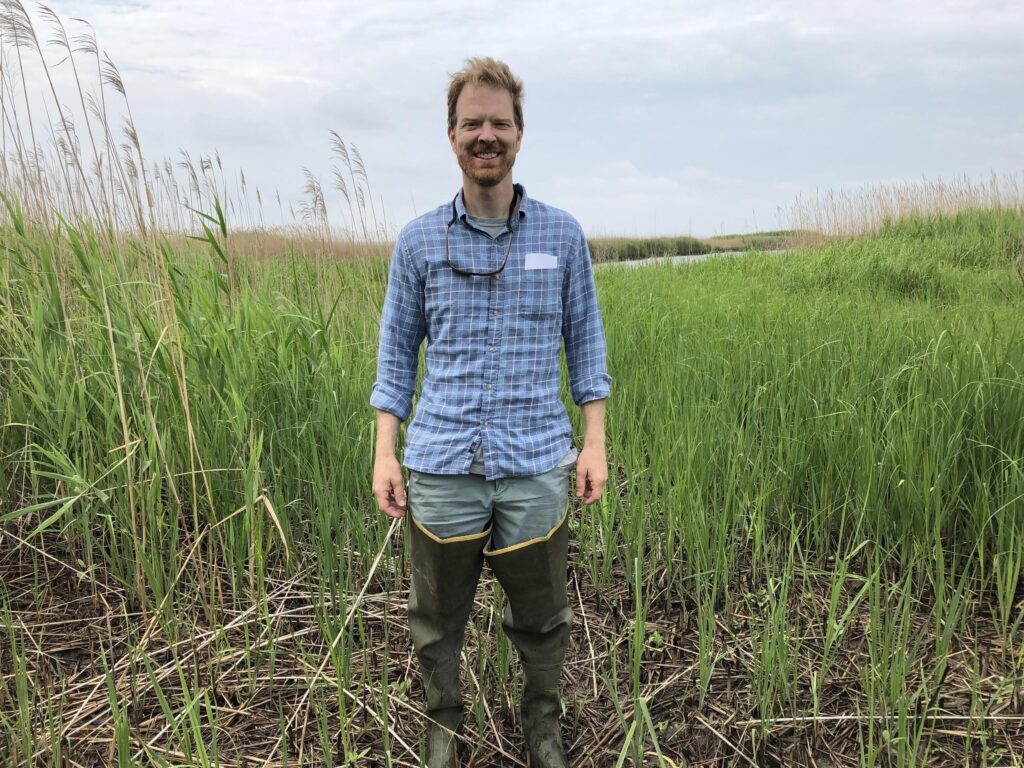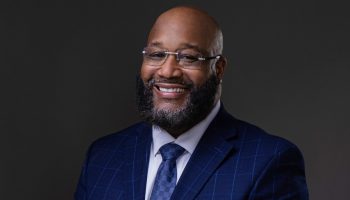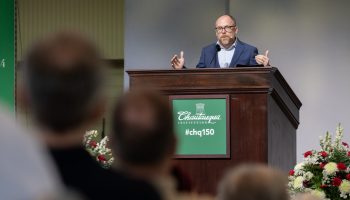
Mariia Novoselia
Staff writer
President and CEO of Chesapeake Conservancy Joel Dunn is working to make Chesapeake Bay a national recreation area, adding it to the 425 units, or parks, overseen by the National Park Service.
“Chesapeake (is) the longest running and arguably the most successful ecosystem restoration initiative in the world,” Dunn said.
The landmark, he said, is “as spectacular as Yellowstone or Yosemite,” “as great as the Great Smokies” and “as grand as the Grand Tetons.” The only difference between Chesapeake Bay and these national parks, Dunn said, is that the bay does not carry the status of a national park.
In his talk at 10:45 a.m. today in the Amphitheater, Dunn will discuss what it takes to create “a new unit of the National Park System” in the 21st century.
“National parks are such a symbol for the conservation movement,” Dunn said. “They are so inspiring for visitors. They stick with you for your whole life.”
Turning the Chesapeake Bay into a national park, he said, has been “a dream of the Chesapeake community for 40 years.”
The idea, Dunn said, was first introduced in the 1980s by O. James “Jim” Lighthizer, county executive of Anne Arundel County, Maryland. Difficulties in getting the official status arose due to different legislative terms used by the National Park Service, Dunn said.
The agency, according to its website, has at least 19 naming designations, such as “national battlefields,” “national parkways” or “national seashores,” that are all commonly referred to by the umbrella term “park.”
“People were struggling with (deciding) what type of unit would be appropriate for our culture and our location because we have sailors, boaters and hunters, and we have all these traditions here in the Chesapeake, which we love and honor,” Dunn said. “We have all these different cultures, and each culture has this incredible history. … How do you include everybody and make sure you don’t negatively affect anybody?”
Dunn said to find the answer to this question, he teamed up with Maryland lawmakers, U.S. Sen. Chris Van Hollen and U.S. Rep. John Sarbanes, who together decided to look at other, similar bodies of water across the United States, like the Delaware Water Gap or Boston Harbor Islands, which both turned out to be national recreation areas.
“They have a bridge; we have a bridge. They have a bay; we have a bay. They have a maritime museum; we have a maritime museum,” Dunn said. “We found it.”
The idea of turning Chesapeake Bay into a national recreation area is widely supported by the local community, with 83% of Maryland, Virginia and Washington, D.C., respondents to a public opinion poll voting in favor of pursuing the status, Dunn said.
“There is an outpouring of support for this concept. People love Chesapeake Bay,” he said. “It’s a national treasure. That’s the way we feel about it; we’re convinced of it, and so we want the rest of the world to know it.”
Making the bay a national recreation area will provide it with a wide variety of new opportunities, Dunn said. For one, he said, the status will “(make) it clear that the United States cherishes Chesapeake,” which is “the birthplace of American identity.”
From settlements of Native Americans to the arrival of Europeans and “subsequently, the various other chapters of the creation of our democracy,” Dunn said, the bay has a rich history that needs to be told.
“This national recreation area is going to be a key element of the restoration movement moving forward. It’s not going to solve all the problems, but it’s going to give people a sense of appreciation, wonder and commitment to protect and restore the Chesapeake,” Dunn said. “It’s going to be this really inclusive park that brings everybody – no matter where they’re from, no matter what they look like, no matter how much money they have. Everybody is going to be drafted into this movement because it’s the passion of our times.”
An issue that Chesapeake Bay is facing, he said, is very similar to that of Chautauqua. Nitrogen, phosphorus and sediment are the three main pollutants causing algae growth that can be harmful for humans and animals. When algae dies, it rots and soaks up all the oxygen, creating anoxic conditions. The absence of oxygen, Dunn said, makes it “difficult or impossible for oysters and fish and all kinds of living things to survive.”
To combat pollution, the conservancy has invested in sewage treatment plants and upgraded sewage systems, Dunn said.
“We’ve seen a lot of positive response in terms of water quality and biological resources, like underwater grasses, fisheries; but not as much of a response as we expected,” Dunn said. “The one thing that I believe is key to restoring the bay is making sure everybody knows the bay – because if they know the bay, they will love the bay. People who get out there either just to hike along the shore, or go boating, or catch a fish – they love the bay. They learn to love the bay, and when they love the bay, they vote for the bay or they donate to the bay, or they commit their careers to the bay.”
Legislation to make Chesapeake Bay a national recreation area was introduced on July 27, which Dunn described as “a major step for the community.” He said he hopes to have the bill passed by the current Congress.
“We have a very supportive Biden administration in terms of parks and outdoor recreation, equity and dealing with climate change; and I think that this bill is right in line with their priorities,” Dunn said.
The importance of national parks and recreation areas, he said, only grows in times of a climate crisis, along with a strong demand for equity and outdoor resources, as well as for economic and psychological reasons.
“Parks are critical to our society at large,” Dunn said. “Not only are they warehouses or reservoirs of biodiversity, but they provide ecosystem services; they educate our citizenry about our history, our biology; they fuel our economy by bringing visitors and supporting our local businesses.”
The U.S. Department of Commerce’s Bureau of Economic Analysis estimated that in 2019, the outdoor recreation economy made up for 2.1% of total U.S. gross domestic product, according to a 2020 press release provided by Dunn. Chesapeake Bay added more $63 billion to the economy from outdoor recreation across all the states in the bay’s watershed, the release said.
Wildlife and “diversity of life and culture,” Dunn said, are his favorite things about Chesapeake Bay.
“This morning I went for a walk out at a park on the bay,” he said. “I heard a green tree frog singing in the trees. I stopped to listen to a bird. I saw a green heron, which you don’t see a lot around here, so it was really cool. I played fetch with my dog Moose in the water, and then there were ospreys flying overhead.”
Dunn’s two children are another reason why he keeps fighting for the bay and its status as a national recreation area.
“I want my kids to have those same experiences and opportunities,” he said. “I really want them to be able to have that same morning I had this morning – hear those frogs, those birds sing and be able to play fetch with their dog without having to worry about harmful algal blooms or toxins in the water.”




